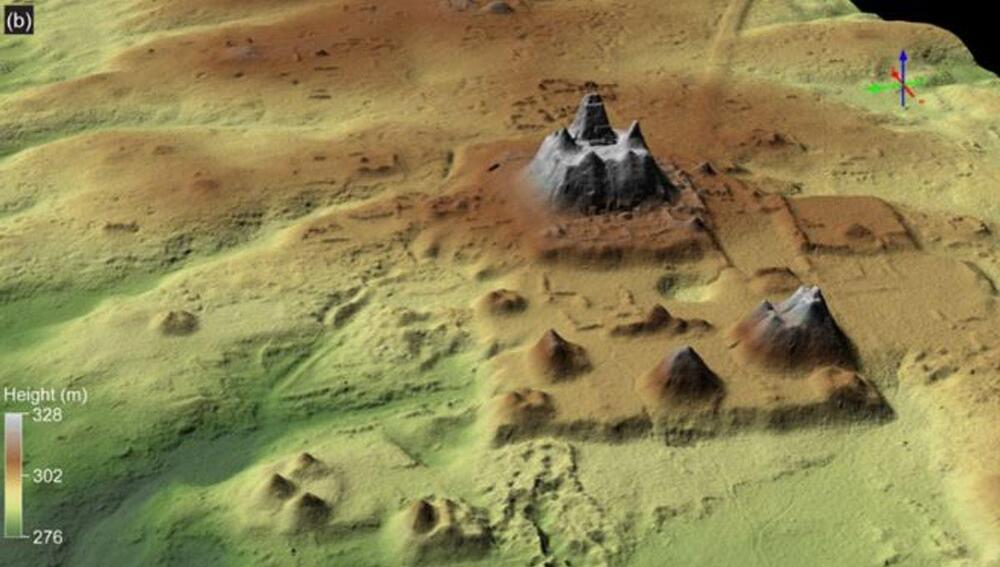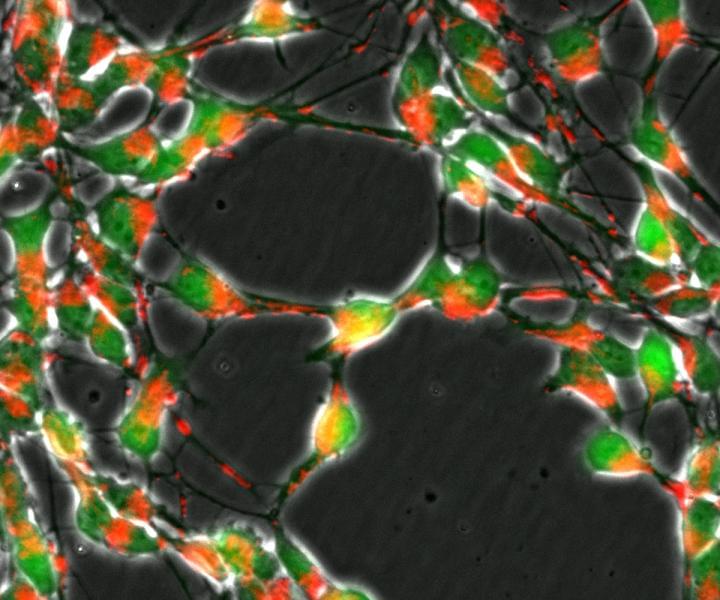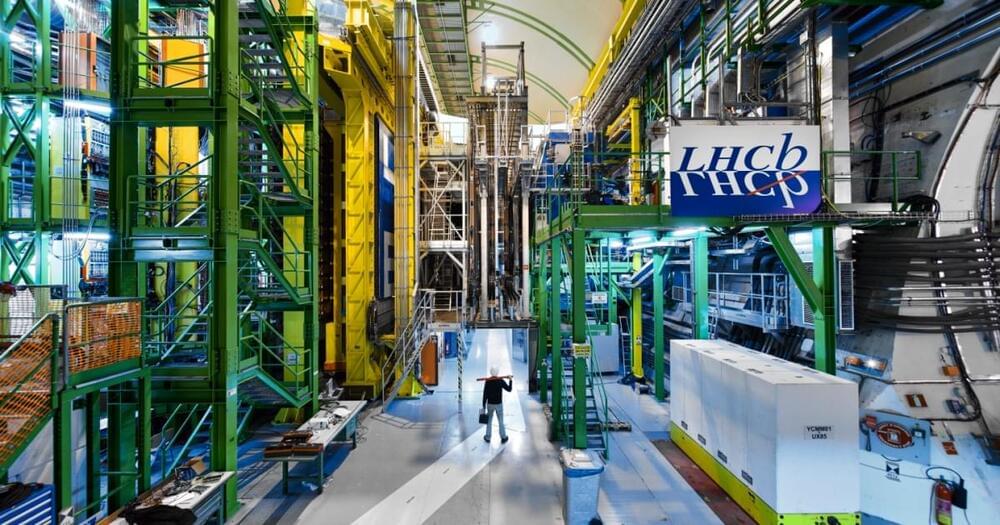Meet the “Provora” — tiny predators that have been evolving separately from the rest of life on Earth for millions of years.



A previously unidentified Maya civilization made up of 964 interconnected settlements has been discovered in northern Guatemala. Dated to the Preclassic Maya period – which lasted from around 1,000 BCE until 150 CE – the scattered sites cover an area of approximately 1,685 square kilometers (650 square miles) and are linked by 177 kilometers (110 miles) of ancient roads.
Researchers spotted the network of settlements using LiDAR, a detection system that bounces laser signals off surfaces in order to reveal hidden features and structures. While flying over Guatemala’s Mirador-Calakmul Karst Basin (MCKB), the team utilized the technology in order to penetrate the thick jungle canopy and expose the ancient constructions lurking beneath.
“The LiDAR survey revealed an extraordinary density and distribution of Maya sites concentrated in the MCKB, many of them linked directly or indirectly by a vast causeway network,” write the researchers in a new study. In total, they found 775 sites within the MCKB itself, with a further 189 located in the surrounding karstic ridge.

This Video Explains Biogenesis of Ribosomes in Eukaryotes.
The Link Of The Transcription Of mRNA In Eukaryotes https://youtu.be/oZZMXv19PEU
The Link Of The Translation Or Biosynthesis Of Proteins https://youtu.be/85FUw8_YZYY
Thank You For Watching.
Please Like And Subscribe to Our Channel: https://www.youtube.com/EasyPeasyLearning.
Like Our Facebook Page: https://www.facebook.com/learningeasypeasy/
Join Our Facebook Group: https://www.facebook.com/groups/460057834950033
Support Our Channel: https://www.patreon.com/supereasypeasy


Longtermism extends this thinking to what impartiality demands in the temporal sense: equal concern for people’s wellbeing wherever they are in time. If we care about the wellbeing of unborn people in the distant future, we can’t outright dismiss potential far-off threats to humanity—especially since there may be truly staggering numbers of future people.
How Should We Think About Future Generations and Risky Ethical Choices?
An explicit focus on the wellbeing of future people unearths difficult questions that tend to get glossed over in traditional discussions of altruism and intergenerational justice.

“In their world, everything is just a blur,” says Healy. The starfish’s temporal perception may be so slow because it is an herbivore – it doesn’t need to strike fast to get a meal. A tasty coral polyp will be in the same place even if it takes the starfish more than a second to find it. A marine predator such as a shark, on the other hand, needs to see faster to catch fish, which are constantly moving.
On average, flying animals detect light changes at a faster rate than land-bound animals, likely because they need to be able to sense changes around them quickly to avoid collisions. “If you fly, you see faster,” says Healy.
Healy’s research found that dragonflies can perceive changes in their environment the fastest, detecting 300 flashes per second – nearly five times faster than humans and 400 times faster than starfish. “It’s almost like bullet time in The Matrix,” says Healy, describing dragonflies’ time perception.
Lately, a lot of anti-AI art groups started to emerge online, they started pressuring companies to ban any images generated by AI on their websites. Recently they managed to cancel Unstable Diffusion’s Kickstarter and Patreon page because of their disdain of AI art. They claim to be an open and welcoming community but are not afraid of going all out against people who don’t agree with their point of view. In this video, I will explain everything that happened recently in the AI art community, the dangers that represent these groups for freedom of expression and the future I see for AI art in general.
What do you think of this situation? Let me know in the comments!
▬▬▬▬▬▬▬▬▬▬▬▬▬▬▬▬▬▬▬▬▬
SOCIAL MEDIA LINKS!
✨ Support my work on Patreon: https://www.patreon.com/aitrepreneur.
⚔️ Join the Discord server: https://discord.gg/3ErYSdyUPt.
▬▬▬▬▬▬▬▬▬▬▬▬▬▬▬▬▬▬▬▬▬
Runpod: https://bit.ly/runpodAi.
#stablediffusion #aiartcommunity #aiartists.
▬▬▬▬▬▬▬▬▬▬▬▬▬▬▬▬▬▬▬▬▬
WATCH MY MOST POPULAR VIDEOS:
RECOMMENDED WATCHING — My “Stable Diffusion” Playlist:
►► https://bit.ly/stablediffusion.
RECOMMENDED WATCHING — My “Tutorial” Playlist:
►► https://bit.ly/TuTPlaylist.
Disclosure: Bear in mind that some of the links in this post are affiliate links and if you go through them to make a purchase I will earn a commission. Keep in mind that I link these companies and their products because of their quality and not because of the commission I receive from your purchases. The decision is yours, and whether or not you decide to buy something is completely up to you.
For some, automation will usher in a labor-free utopia; for others, it signals a disastrous age-to-come. Yet whether seen as dream or nightmare, automation, argues Munn, is ultimately a fable that rests on a set of triple fictions. There is the myth of full autonomy, claiming that machines will take over production and supplant humans. But far from being self-acting, technical solutions are piecemeal; their support and maintenance reveals the immense human labor behind autonomous processes. There is the myth of universal automation, with technologies framed as a desituated force sweeping the globe. But this fiction ignores the social, cultural, and geographical forces that shape technologies at a local level. And, there is the myth of automating everyone, the generic figure of the human at the heart of automation claims. But labor is socially stratified and so automation’s fallout will be highly uneven, falling heavier on some (immigrants, people of color, women) than others. Munn moves from machine minders in China to warehouse pickers in the United States to explore the ways that new technologies do (and don’t) reconfigure labor. Combining this rich array of human stories with insights from media and cultural studies, Munn points to a more nuanced, localized, and racialized understanding of the future of work.
Buy the book from Wellington Square Bookshop
https://wellingtonsquarebooks.indiecommerce.com/book/9781503631427
Find more of the Avid Reader Show here:
Instagram: https://www.instagram.com/avidreadershow/
Listen on
Podomatic: https://avidreader.podomatic.com/
ITunes: https://podcasts.apple.com/us/podcast/the-avid-reader-show/id408688026
